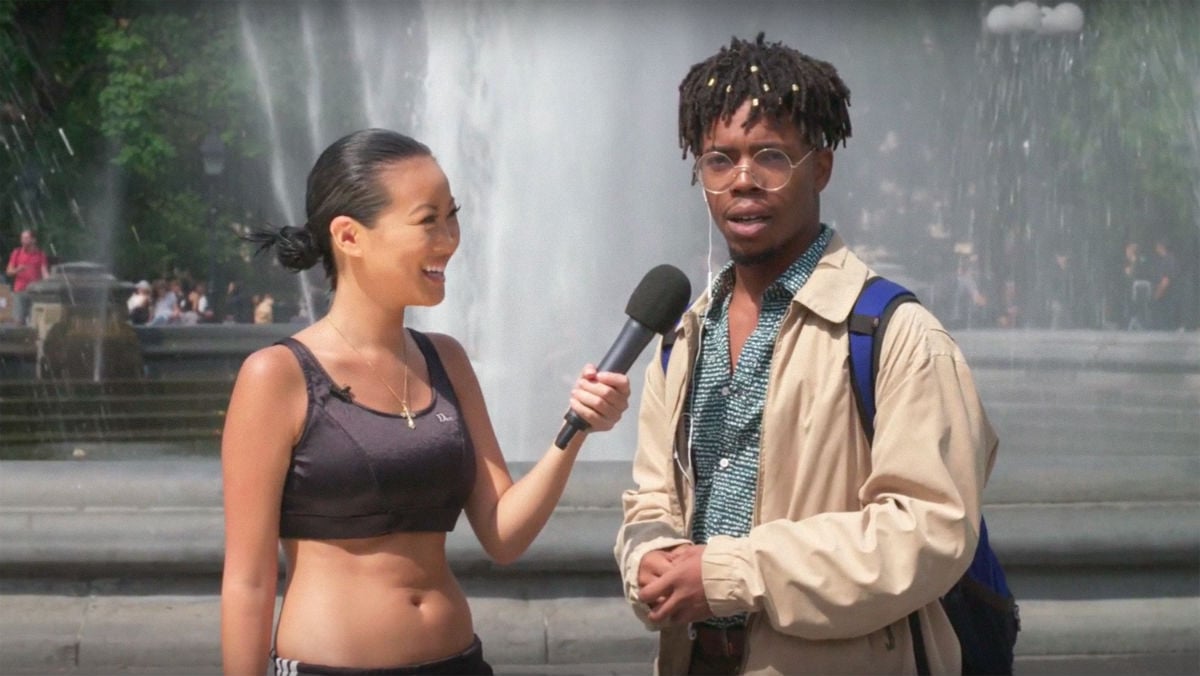
The New York-based art collective known as DIS partly came to prominence through its freewheeling online publication, DIS Magazine. Now, the Post-Internet cabal is following in the footsteps of media organizations around the globe and making a pivot to video—going post-text, as it were. As of January 2018, DIS will be transitioning to a video-streaming channel its members describe as “PBS for Gen Z, Century of the Self meets Sesame Street, theory as self help, an Art School that you can stream.”
As an artist collective formed by Lauren Boyle, Solomon Chase, Marco Roso, and David Toro, DIS has helped to define a certain brand of web-savvy surrealism. Its namesake magazine’s arch, skeptical take on media fashion earned it cult status and mention in the New York Times, among many other places. But the group seems quite earnest about its bet that video is the future.
“The signs are everywhere,” DIS wrote in an email to artnet News. “Internet video streaming through services like Roku, Apple TV, or Chromecast grew 50 percent in 2016. Podcast ad revenue went up 85 percent since last year. Learning channels (MOOCS) like Khan Academy and Coursera are growing in huge numbers, indicating we want more information, we just want it delivered differently.”
Still from General Intellects with Mckenzie Wark. Image courtesy DIS.
What will the new video-driven DIS Magazine look like? A preview reveals that flagship programs include a series of short educational videos by Mckenzie Wark consisting of the Hacker Manifesto philosopher’s disembodied head explaining the concepts of thinkers he admires. (It’s basically a self-aware joke on the idea of “talking head” video lectures.)
Other videos blur the line between educational material, sketch comedy, and freestanding artwork. These include a segment, conceived by artist Darren Bader, in which a reporter on the street asks people “What is an egg?” and records their bemused reactions; a report by Jacob Hurwitz-Goodman and Daniel Keller on the Seasteading movement, an effort to build libertarian paradises on man-made islands; and a video essay by artist and thinker Aria Dean extending her theory about the representation of blackness within meme culture.
In the broader media landscape, the so-called “pivot to video” has seen scores of publications downplay written content, chasing add dollars and trying to please the fickle Facebook algorithm, which has incentivized video posts. The trend has been embraced, decried, and endlessly mocked.
DIS says that its new initiative is a sincere attempt to capture the spirit of the moment. “We choose video now because we want the conversations bubbling up in contemporary art, culture, activism, philosophy, and technology to reach a wider audience, the way TV can,” the group writes.
The full DIS video experience will debut in the new year at www.dis.art. The new videos will also premiere IRL at San Francisco’s de Young Museum in a show called “Genre-Nonconforming: The DIS Edutainment Network,” opening December 3.
Additional reporting by Hannah Pikaart